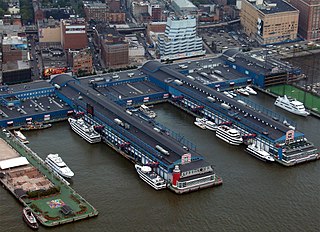 W
WRMS Lusitania was a British ocean liner that was sunk on 7 May 1915 by a German U-boat 11 miles (18 km) off the southern coast of Ireland, killing 1,198 passengers and crew. The sinking occurred about two years before the United States declaration of war on Germany. Although the Lusitania sinking was a major factor in building support for a war, war was eventually declared only after the Imperial German Government resumed the use of unrestricted submarine warfare against American shipping in an attempt to break the Transatlantic supply chain from the US to Britain, as well as after the Zimmermann Telegram. Lusitania held the Blue Riband appellation for the fastest Atlantic crossing and was briefly the world's largest passenger ship until the completion of the Mauretania three months later. The Cunard Line launched her in 1906 at a time of fierce competition for the North Atlantic trade. She was sunk on her 202nd trans-Atlantic crossing.
 W
WThe RMS Lusitania was a UK-registered ocean liner that was torpedoed by an Imperial German Navy U-boat during the First World War on 7 May 1915, about 11 miles (18 km) off the Old Head of Kinsale, Ireland. The attack took place in the declared maritime war-zone around the UK, shortly after unrestricted submarine warfare against the ships of the United Kingdom had been announced by Germany following the Allied powers' implementation of a naval blockade against it and the other Central Powers. The passengers had been warned before departing New York of the danger of voyaging into the area in a British ship.
 W
WLieutenant-Colonel Sir Hugh Andrew Montagu Allan, was a Canadian businessman and philanthropist. He was the principal heir of his father, Sir Hugh Allan, and became deputy chairman of the family-owned Allan Steamship Line. He was president of several major Canadian financial institutions and of the Montreal General Hospital. He co-founded and was president of the Ritz-Carlton Hotel in Montreal. In 1940, he and his wife donated their Montreal home, Ravenscrag, to the McGill University Faculty of Medicine, and it became known as the Allan Memorial Institute. He is best remembered as a sportsman who donated the Allan Cup, a trophy that is still awarded today to the Canadian men's amateur ice hockey champions.
Oliver Percy Bernard OBE MC was an English architect, and scenic, graphic and industrial designer. He was instrumental in developing conservative Victorian British taste in a modernist European direction; much of his work is frequently characterised as art deco.
 W
WJosephine Mary Brandell was an Austrian-Jewish musical actress and actress notable for surviving the torpedoing of the RMS Lusitania in 1915. Following her marriage in 1945 to Beresford Cecil Bingham, 8th Earl Annesley she became Josephine, Countess of Annesley.
 W
WJohn Brown and Company of Clydebank was a Scottish marine engineering and shipbuilding firm. It built many notable and world-famous ships including RMS Lusitania, RMS Aquitania, HMS Hood, HMS Repulse, RMS Queen Mary, RMS Queen Elizabeth and the Queen Elizabeth 2.
 W
WChelsea Piers is a series of piers in Chelsea, on the West Side of Manhattan in New York City. Located to the west of the West Side Highway and Hudson River Park and to the east of the Hudson River, they were originally a passenger ship terminal in the early 1900s that was used by the RMS Lusitania and was the destination of the RMS Carpathia after rescuing the survivors of the RMS Titanic. The piers replaced a variety of run-down waterfront structures with a row of grand buildings embellished with pink granite facades.
 W
WAvis Gertrude Dolphin was a survivor of the 7 May 1915 sinking of RMS Lusitania.
 W
WOgden Haggerty Hammond was an American businessman, politician and diplomat who served as United States Ambassador to Spain from 1925 to 1929. He was the father of Millicent Fenwick, a four-term Republican member of the United States House of Representatives from New Jersey.
 W
WMarguerite Lucile Jolivet known professionally as Rita Jolivet was an American-born British actress of French descent in theatre and silent films in the early 20th century. She was known in private life as the Countess Marguerita de Cippico.
 W
WTheodate Pope Riddle was an American architect and philanthropist. She was one of the first American women architects as well as a survivor of the sinking of the RMS Lusitania.
 W
WKapitänleutnant Walther Schwieger was a U-boat commander in the Imperial German Navy during First World War. In 1915, he sank the passenger liner RMS Lusitania with the loss of 1,198 lives.
 W
WThe Sinking of the Lusitania (1918) is an American silent animated short film by cartoonist Winsor McCay. It is a work of propaganda re-creating the never-photographed 1915 sinking of the British liner RMS Lusitania. At twelve minutes it has been called the longest work of animation at the time of its release. The film is the earliest surviving animated documentary and serious, dramatic work of animation. The National Film Registry selected it for preservation in 2017.
 W
WMargaret Haig Mackworth, 2nd Viscountess Rhondda was a Welsh peeress, businesswoman and active suffragette who was significant in the history of women's suffrage in the United Kingdom.
 W
WSM U-20 was a German Type U 19 U-boat built for service in the Imperial German Navy. She was launched on 18 December 1912, and commissioned on 5 August 1913. During World War I, she took part in operations around the British Isles. U-20 became infamous following her sinking of the British ocean liner RMS Lusitania on 7 May 1915, an act that dramatically reshaped the course of World War I.
 W
W